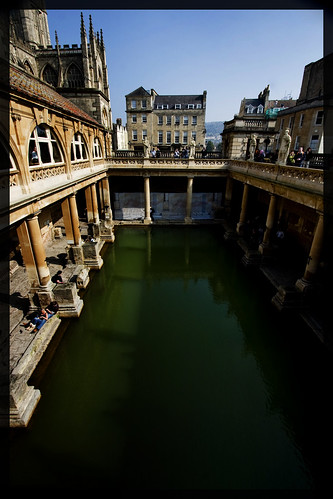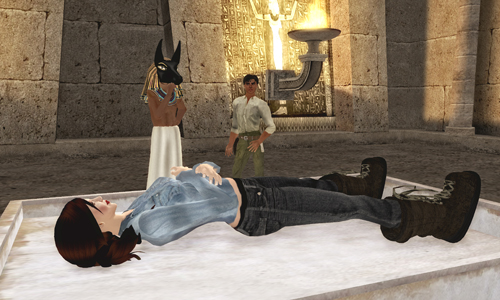 We are approaching winter; the weather is going downhill and the days are getting shorter. After a long, sun-deprived day in the office there’s nothing better than the idea of cosying up with hot chocolate, thick socks, and woolly jumpers, or – best of all – a long hot bath. This winter-time ritual reminds me of the Turkish bath, or hammam. Throughout the world, spas and baths have become part of our busy lives, as a means of peaceful retreat and to recharge our batteries. They’re a place of sanctuary that we search for to find peace and quiet. But in ancient history, people used baths in a different way than the way we use them now.
We are approaching winter; the weather is going downhill and the days are getting shorter. After a long, sun-deprived day in the office there’s nothing better than the idea of cosying up with hot chocolate, thick socks, and woolly jumpers, or – best of all – a long hot bath. This winter-time ritual reminds me of the Turkish bath, or hammam. Throughout the world, spas and baths have become part of our busy lives, as a means of peaceful retreat and to recharge our batteries. They’re a place of sanctuary that we search for to find peace and quiet. But in ancient history, people used baths in a different way than the way we use them now.
Turkish baths were adapted from those of the Romans and Byzantines. The first baths were set up in Anatolia, and were changed over time by the Seljuk and Ottoman Turks. Now the hammams are used mainly as a tourist attraction, but back in ancient Turkey they were part of daily life, celebrations and gatherings.
When you compare the Roman baths to the Ottoman style baths they share the same architectural style. All all have three separate rooms; first the hot room (sicaklik or caldarium), secondly the warm room (iliklik or the tepidarium) where you wash yourself with soap, and finally is the cold room (sogukluk) for resting. Islamic influence led to the segregation of men and women in the traditional Roman and Byzantine baths, although there is evidence of communal bathing in some baths.
For the Ancient Romans the bath was part of their daily life to cleanse themselves. They bathed in pools like the one at Bath, in the photo above. Nowadays we keep our baths rather as a private thing for ourselves, but for the ancients it was a very public activity. I see the Roman baths more like our modern gyms, as the exercise was part of the ritual.
Turkish Baths, on the other hand, were for more than just cleansing the body; they were used as celebrations to mark important times in ones lifeline, from a 40-day-old babys first ritual bath to circumcision and major bridal celebrations and Henna parties. The Turks had very scarce water and many considered water sacred, so I think that by forming these Turkish baths they were celebrating, in a way, water and life.
Ancient Hen Parties and Dodgy Stag Dos
 Baths are quite private now, but back then they were having hen parties in the Turkish Baths with full music and near-naked dancing. Also social status was not much of big deal, unlike in our luxury spa experiences; Turkish baths were open to everyone from children to adults in all walks of life. It was where women became unusually quite comfortable in their nakedness around other women. Men in general would cover up with a peshtamal; a linen towel strategically wrapped around their hip.
Baths are quite private now, but back then they were having hen parties in the Turkish Baths with full music and near-naked dancing. Also social status was not much of big deal, unlike in our luxury spa experiences; Turkish baths were open to everyone from children to adults in all walks of life. It was where women became unusually quite comfortable in their nakedness around other women. Men in general would cover up with a peshtamal; a linen towel strategically wrapped around their hip.
I love the stories behind each tradition, and when we look closely at why women found freedom and joy by gathering in hammams is amazing. At the time of the Ottoman empire women did not have much freedom to be out on their own. Gatherings for regular cleansing rituals turned quickly into the chance to get together in a relaxed environment. Women enjoyed their freedom and spending time with their friends – almost everything got celebrated in a hammam.
For men it was a different matter. ‘Tellaks’, or ‘masseurs’, who worked in the baths in the Ottoman empire had a special relation with their clients and it is said that many of these young men were actually sex workers. The erotic and the sensual part of the Turkish Bath was brought to us in a very sensational movie called Hamam. The movie is set in old Istanbul, where east meets west, and a young Italian guy meets a handsome Turkish man.Their scene in the movie has become a cult scene. Similarly, in most paintings from the Ottaman Empire the hammam scenes were quite popular!
Of course, these days, bathing is a different proposition altogether. Most of the time, we bathe for reasons of hygiene, beauty and relaxation, to detox our bodies, and to get a moment of calm and privacy in our busy lives. But are we missing out on the joys of community bathing? The girly spa days that have seen a resurgence recently certainly suggest that for women hammams can play a vital role in female friendship and celebration.
If you are planning a trip to Istanbul soon, make sure you check the following Traditional Turkish baths in the heart of the city. The top three Hamams in Istanbul are Cemberlitas hamami, Cagaloglu hamamiand Galatasaray Hamami.



